
Tying up to a dock or bulkhead can become confusing but simply knowing the names and purpose of some of the lines on your vessel can smooth the entire process.
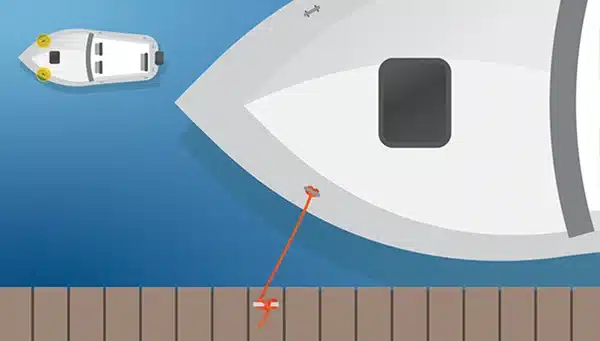
Bow Lines originate from a cleat at the front of the boat, run through a chock on the forward gunwale, and attach to a cleat or other tying fixture on the dock or bulkhead. Secure this line so the boat cleat is even with or slightly ahead of the tying fixture. Secure bow lines first when possible. In a slip or berth, two bow lines are generally used. These usually originate from the same cleat on smaller vessels.
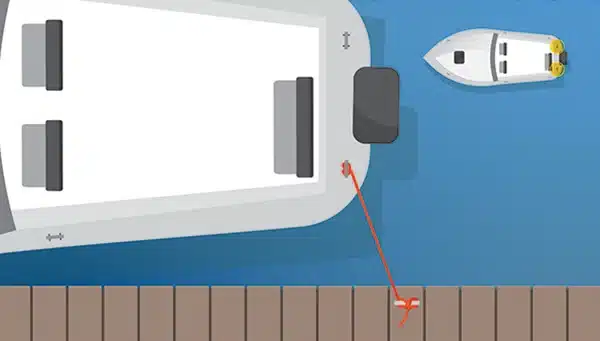
Stern Lines originate from cleats or chocks on opposite sides of the transom. Use the line closest to the tying fixture when securing to a dock or bulkhead. For slips or berths, use both stern lines. Attach stern lines after securing bowlines.
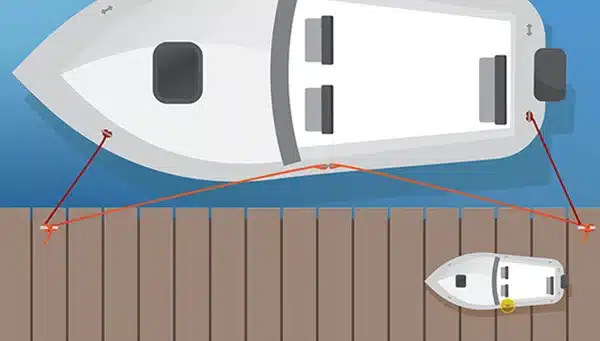
Spring Lines keep wind blowing parallel to the dock from pushing your boat away from its secured position. The direction these lines run from the boat determines their designation as “forward” or “aft” spring. Forward springs are rigged from the stern and run one-third or more of the vessel’s length toward the bow. Aft springs are rigged at the bow and run toward the stern. Pull on the forward spring to bring the stern closer to the dock or bulkhead. Pull the aft spring to bring in the bow.
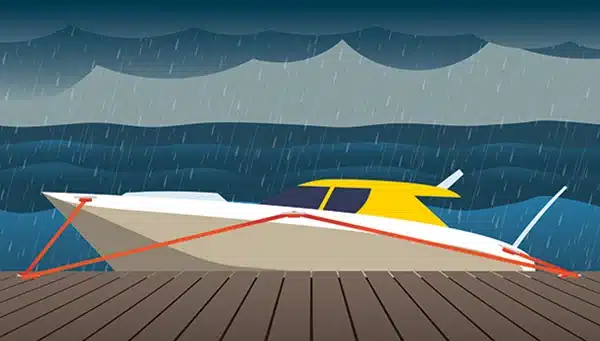
Your Surroundings are very important when docking. Be certain to consider wind strength/direction, wave/wake action, and tidal stage when securing dock lines. Bow and stern lines should be set with minimum play while allowing for rising or falling water. Spring lines should be nearly tight at low tide.
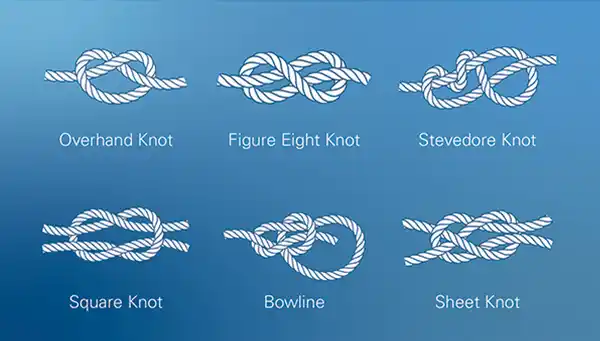
When Buying Dock Lines nylon is generally the best way to go. Nylon lines are strong, smooth, easy to handle and stretch enough to absorb considerable shock. For vessels less than 27 feet, 3/8-inch diameter should do the job. Larger boats should add 1/8-inch diameter for each additional nine feet in length. Thicker lines wear longer but stretch less! Now that you have the lines, how do you tie them? Read on here.
UNMATCHED MEMBER BENEFITS
Sea Tow has been the premier leader in on-water boating assistance since 1983. With Sea Tow, you pay one annual rate and receive the most comprehensive member benefits available. Membership includes a full suite of on-water assistance services for every boat you own or rent. Learn more about our membership options today. To find the Sea Tow closest to you, use our service locator or call our Customer Care Team at 800-4-SEATOW.
